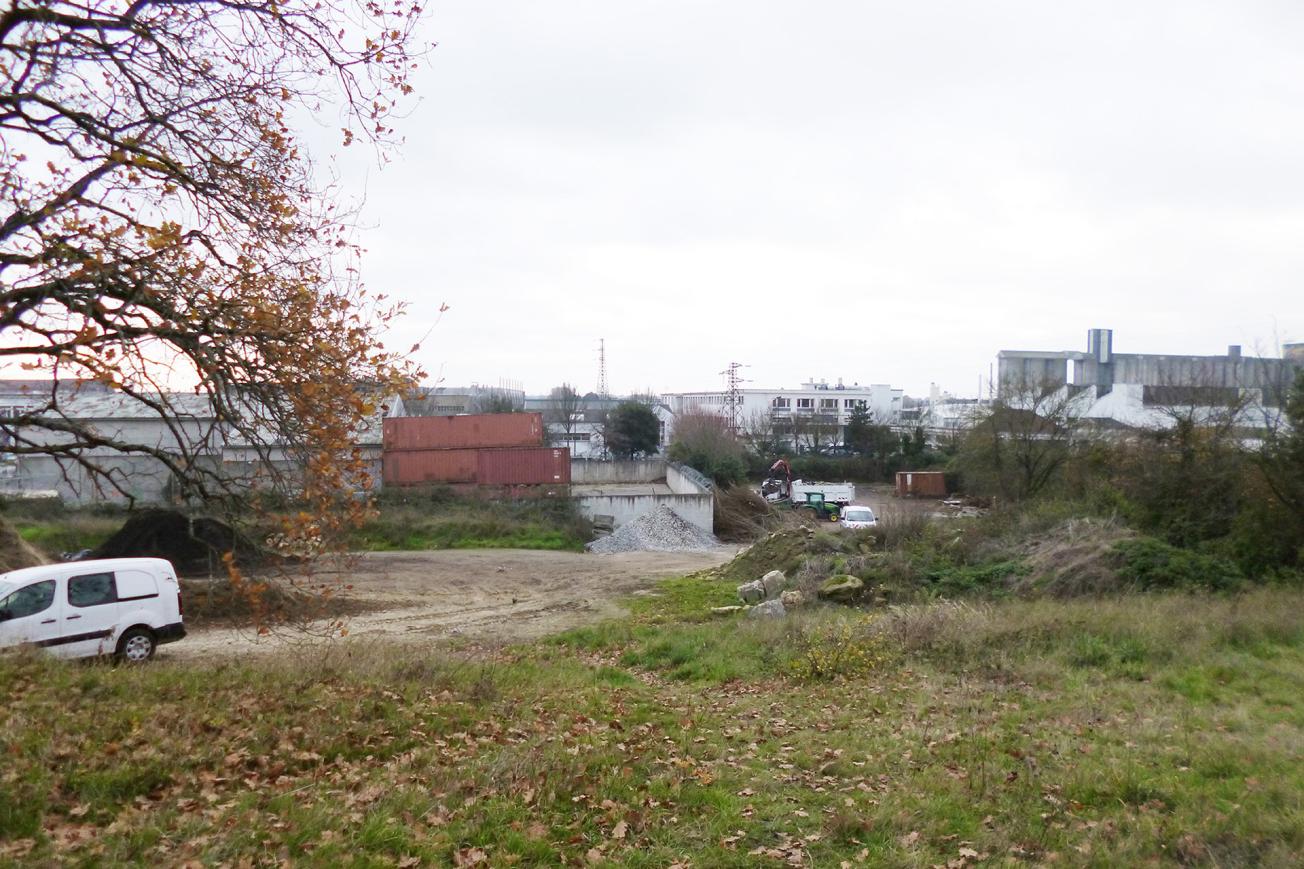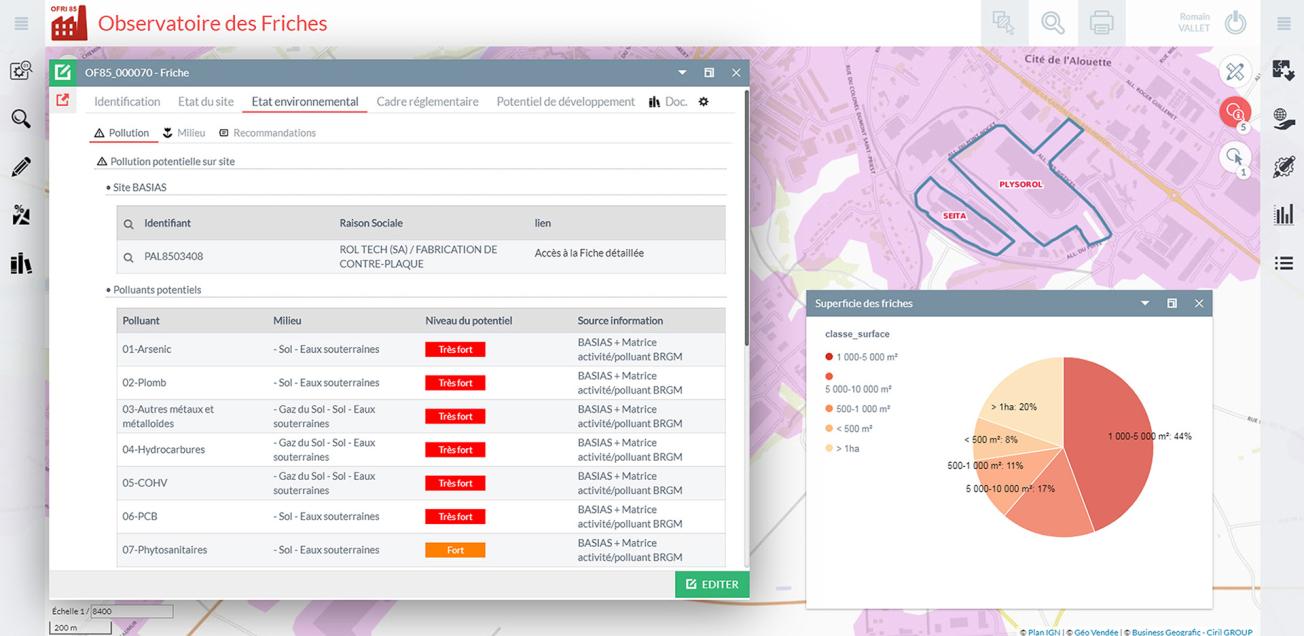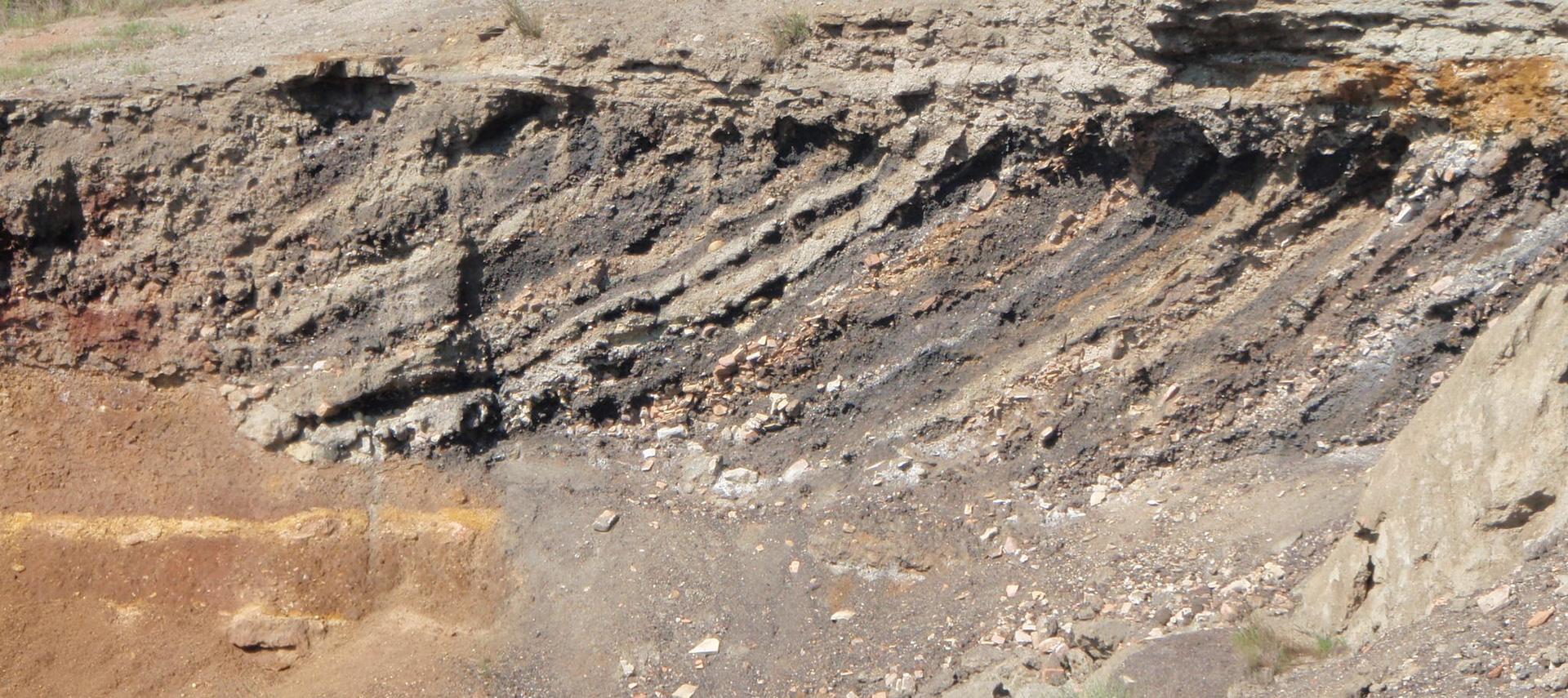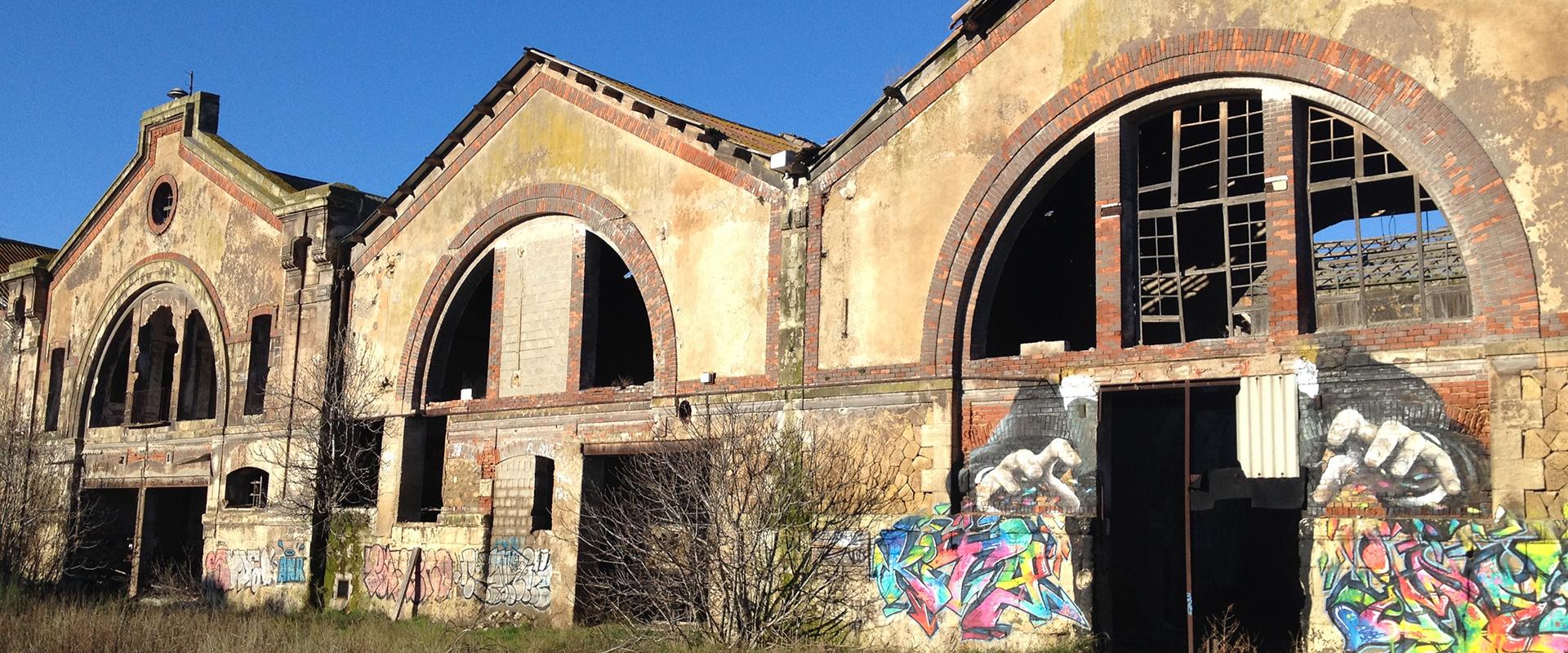
Industrial wasteland in Nantes (Loire-Atlantique).
© BRGM
The need
As part of the implementation of the Vendée wasteland observatory, the Vendée public lands consolidation organisation (EPF) called on BRGM in 2017 to support it in its mission to reconvert industrial and commercial wasteland, put obsolete or abandoned land back on the market and conserve the environment. The EPF wanted to be able to integrate a simplified assessment of the health and environmental issues associated with the sites into the wasteland knowledge and monitoring database developed for its departments and local and regional authorities.

Consultation interface for the Vendée wasteland observatory.
© EPF de Vendée
The results
BRGM proposed definitions of the different types of wasteland (industrial, commercial, tourist, agricultural, etc.) envisaged for inclusion in the observatory. On this basis, a set of indicators to be included in the description of industrial wasteland sites, as well as the corresponding national and regional source data, were identified. TA complex method for cross-referencing these indicators was developed to make a set of recommendations for each wasteland identified.
The proposed simplified assessment methodology is based on the principles of the environmental vulnerability study enshrined in the national methodology for the management of polluted sites and ground (Ministry of the Environment, 2017) applied to each site identified in the observatory. This methodology makes it possible to integrate the likelihood of there being pollutants and the nature of the (potential) pollutants deduced from the type of historical and recent industrial activities and services, the environments that may be affected, the hydro(geo-)logical context and a first approach to assessing the likelihood of there being natural geochemical anomalies.
The recommendations generated automatically for each site identified are then adapted to the different situations encountered in terms of potential pollution (potential, proven, residual) or natural geochemical anomaly. For example, they cover the possible need for ground diagnosis to check the compatibility between ground quality and planned uses, the anticipated management of the excavated ground or projected construction.
Using the results
The Vendée wastelands observatory, the results of which have been placed on the web since June 2018, is used by the EPF Vendée and also by any local authorities in the département that so wish. The latter can consult the summary sheets for the wastelands identified, which should help them for regional spatial planning and for defining their land-use strategy, and can also submit any comments to the EPF in order to help with the continual updating of this observatory.

As part of the development of the urban and industrial wasteland observatory, we naturally approached BRGM, which already had experience of the subject. Its expertise was extremely useful for the working group set up and made it possible to enhance the environmental features of the tool. It will soon be made available to Vendée local authorities to inform them of the potential risks of pollution and the additional investigations to be carried out.







